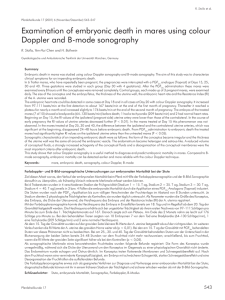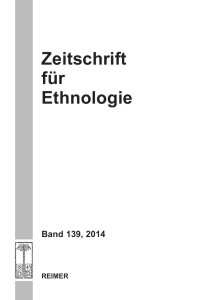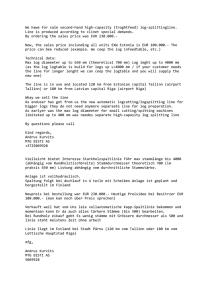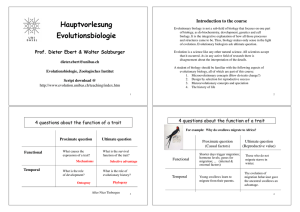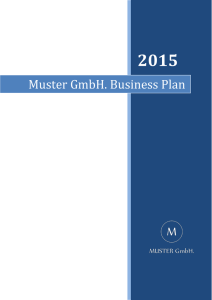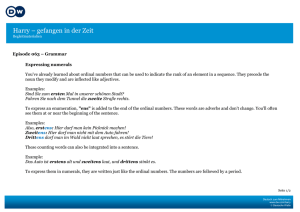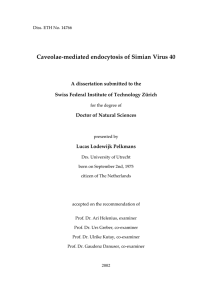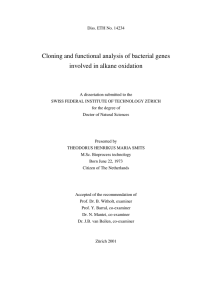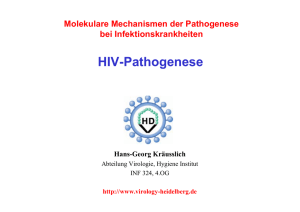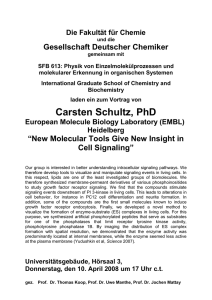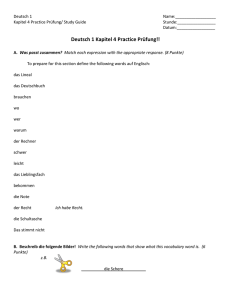Induction of multiple ovulations in mares using low doses of GnRH
Werbung
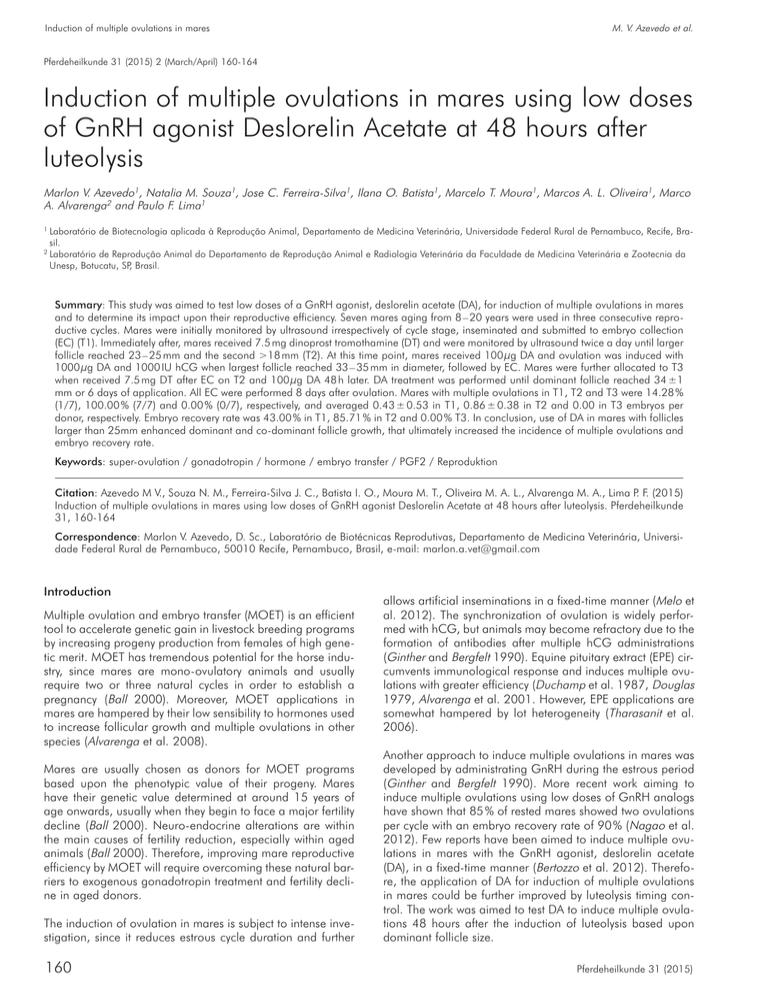
M. V. Azevedo et al. Induction of multiple ovulations in mares Pferdeheilkunde 31 (2015) 2 (March/April) 160-164 Induction of multiple ovulations in mares using low doses of GnRH agonist Deslorelin Acetate at 48 hours after luteolysis Marlon V. Azevedo1, Natalia M. Souza1, Jose C. Ferreira-Silva1, Ilana O. Batista1, Marcelo T. Moura1, Marcos A. L. Oliveira1, Marco A. Alvarenga2 and Paulo F. Lima1 1 Laboratório de Biotecnologia aplicada à Reprodução Animal, Departamento de Medicina Veterinária, Universidade Federal Rural de Pernambuco, Recife, Brasil. 2 Laboratório de Reprodução Animal do Departamento de Reprodução Animal e Radiologia Veterinária da Faculdade de Medicina Veterinária e Zootecnia da Unesp, Botucatu, SP, Brasil. Summary: This study was aimed to test low doses of a GnRH agonist, deslorelin acetate (DA), for induction of multiple ovulations in mares and to determine its impact upon their reproductive efficiency. Seven mares aging from 8 – 20 years were used in three consecutive reproductive cycles. Mares were initially monitored by ultrasound irrespectively of cycle stage, inseminated and submitted to embryo collection (EC) (T1). Immediately after, mares received 7.5 mg dinoprost tromothamine (DT) and were monitored by ultrasound twice a day until larger follicle reached 23 – 25 mm and the second >18 mm (T2). At this time point, mares received 100 µg DA and ovulation was induced with 1000 µg DA and 1000 IU hCG when largest follicle reached 33 – 35 mm in diameter, followed by EC. Mares were further allocated to T3 when received 7.5 mg DT after EC on T2 and 100 µg DA 48 h later. DA treatment was performed until dominant follicle reached 34 ±1 mm or 6 days of application. All EC were performed 8 days after ovulation. Mares with multiple ovulations in T1, T2 and T3 were 14.28 % (1/7), 100.00 % (7/7) and 0.00 % (0/7), respectively, and averaged 0.43 ± 0.53 in T1, 0.86 ± 0.38 in T2 and 0.00 in T3 embryos per donor, respectively. Embryo recovery rate was 43.00 % in T1, 85.71 % in T2 and 0.00 % T3. In conclusion, use of DA in mares with follicles larger than 25mm enhanced dominant and co-dominant follicle growth, that ultimately increased the incidence of multiple ovulations and embryo recovery rate. Keywords: super-ovulation / gonadotropin / hormone / embryo transfer / PGF2 / Reproduktion Citation: Azevedo M V., Souza N. M., Ferreira-Silva J. C., Batista I. O., Moura M. T., Oliveira M. A. L., Alvarenga M. A., Lima P. F. (2015) Induction of multiple ovulations in mares using low doses of GnRH agonist Deslorelin Acetate at 48 hours after luteolysis. Pferdeheilkunde 31, 160-164 Correspondence: Marlon V. Azevedo, D. Sc., Laboratório de Biotécnicas Reprodutivas, Departamento de Medicina Veterinária, Universidade Federal Rural de Pernambuco, 50010 Recife, Pernambuco, Brasil, e-mail: [email protected] Introduction Multiple ovulation and embryo transfer (MOET) is an efficient tool to accelerate genetic gain in livestock breeding programs by increasing progeny production from females of high genetic merit. MOET has tremendous potential for the horse industry, since mares are mono-ovulatory animals and usually require two or three natural cycles in order to establish a pregnancy (Ball 2000). Moreover, MOET applications in mares are hampered by their low sensibility to hormones used to increase follicular growth and multiple ovulations in other species (Alvarenga et al. 2008). Mares are usually chosen as donors for MOET programs based upon the phenotypic value of their progeny. Mares have their genetic value determined at around 15 years of age onwards, usually when they begin to face a major fertility decline (Ball 2000). Neuro-endocrine alterations are within the main causes of fertility reduction, especially within aged animals (Ball 2000). Therefore, improving mare reproductive efficiency by MOET will require overcoming these natural barriers to exogenous gonadotropin treatment and fertility decline in aged donors. The induction of ovulation in mares is subject to intense investigation, since it reduces estrous cycle duration and further 160 allows artificial inseminations in a fixed-time manner (Melo et al. 2012). The synchronization of ovulation is widely performed with hCG, but animals may become refractory due to the formation of antibodies after multiple hCG administrations (Ginther and Bergfelt 1990). Equine pituitary extract (EPE) circumvents immunological response and induces multiple ovulations with greater efficiency (Duchamp et al. 1987, Douglas 1979, Alvarenga et al. 2001. However, EPE applications are somewhat hampered by lot heterogeneity (Tharasanit et al. 2006). Another approach to induce multiple ovulations in mares was developed by administrating GnRH during the estrous period (Ginther and Bergfelt 1990). More recent work aiming to induce multiple ovulations using low doses of GnRH analogs have shown that 85 % of rested mares showed two ovulations per cycle with an embryo recovery rate of 90 % (Nagao et al. 2012). Few reports have been aimed to induce multiple ovulations in mares with the GnRH agonist, deslorelin acetate (DA), in a fixed-time manner (Bertozzo et al. 2012). Therefore, the application of DA for induction of multiple ovulations in mares could be further improved by luteolysis timing control. The work was aimed to test DA to induce multiple ovulations 48 hours after the induction of luteolysis based upon dominant follicle size. Pferdeheilkunde 31 (2015) M. V. Azevedo et al. Induction of multiple ovulations in mares Material and Methods The work was performed at Central Ilana Reprodução Equina, located in Pombos, Pernambuco state, Brazil with the following geographic coordinates: latitude 08º08'29" south, longitude 35º23'45" west, altitude of 208 meters. Seven mare donors of quarter horse and Mangalarga Machador breeds were selected based upon clinical gynecology examination and cyclicality condition, with age varying from eight to twenty years and weight ranging from 450 to 550 Kg. Animals were maintained in individual pens and fed twice a day with Tifton hay (Cynodon spp.), 4 kg of concentrated feed for horses and water and mineral salt ad libitum. Follicular dynamics was evaluated by transrectal ultrasonography (Aloka 500, Japan) equipped with an 5 MHz linear transducer (Ginther 1995). 48 hours later (T2). Moreover, multiple ovulation protocol was initiated when larger follicle reached 23 to 25 mm and second follicle reached 18 mm by 100 µg DA in 12 hour intervals, until dominant follicle reached 33 to 35 mm (4 to 6 days). Ovulation was induced by 1,000 µg DA and 1,000 IU hCG (VetercorTM, Hertape Calier). The AI was performed immediately after ovulation induction and EC on D8. Donors received 7.5 mg DT subsequently after EC on T2. Multiple ovulation was induced 48 hours later, irrespectively of follicle size, by 100 µg DA in 12 hour intervals for 6 consecutive days until dominant follicle reached 33 to 35 mm in diameter (T3). Ovulation was induced by 1,000 µg DA and 1,000 IU hCG followed by AI, and EC was performed on D8 after ovulation induction. Statistical analysis Mares were submitted to three experimental conditions (T1, T2, T3) under three consecutive estrous cycles. Donor mares under a natural estrous cycle had their follicular development monitored by ultrasonography, irrespectively of cycle stage at monitoring onset (T1). Ovulation was induced when dominant follicle reached 33 – 35 mm by an 1000 µg DA (Biachem, USA) intramuscular (IM) shot and 1,000 IU de hCG intravenously (IV), followed by artificial insemination (AI). Mares were submitted to embryo collection (EC) on day 8 (D8) after ovulation induction. Donors received an 7.5 mg dinoprost tromothamine (DT) (LutalyseTM, Pfizer) IM shot immediately after EC on T1, followed by ultrasound follicular growth monitoring twice a day The data with normal distribution was analyzed by ANOVA and Tukey’s test for multiple comparisons. The non-parametric data was analyzed by the Kruskal-Wallis test. The level of statistical significance was p < 0.05. Statistical analysis were performed using the InStat software (GraphPad Software, Inc., 2000). Results Follicular dynamics on T1 allowed the observation that when the larger follicle reached a diameter of 25 mm or more, the remaining follicles entered atresia, on the third or forth day (Figure 1). Follicular dynamics on T2 showed that the codominant follicle had a growth rate similar to the dominant follicle, that ultimately led to two ovulations (Figure 2). The daily follicular growth on T3 had an average of 0.5 ± 0.42 mm, which was lower than T1 2.94 ± 0.48 mm, and T2 (larger follicle 2.95 ± 0.34 mm and second follicle 2.91± 0.43 mm. This difference in growth was noticeable since some recruited follicles entered atresia (Figure 3). Fig. 1 Follicular dynamics in mares under a physiological estrous cycle (T1). The mean number of ovulations per donor on T3 was lower (P < 0.05) then T1 and T2. Moreover, the mean number of ovulations per donor was higher (P < 0.05) on T2 than T1 (Table 1). One donor on T3 displayed, during one cycle, one follicle of 50 mm in diameter without ovulation for ten days. Fig. 2 Follicular dynamics in mares under induced estrous in T2. Day 1 refers to luteolysis induction and Day 3 to multiple ovulation treatment onset. Fig. 3 Follicular dynamics in mares under induced estrous in T3. Day 1 refers to luteolysis induction and Day 2 to multiple ovulation treatment onset. Pferdeheilkunde 31 (2015) 161 M. V. Azevedo et al. Induction of multiple ovulations in mares Donors that had more than one ovulation on the same estrous cycle displayed them in a mean interval of 6 hours. The percentage of mares with multiple ovulations was significantly different (P < 0.005) between treatments, where T2 was higher than T1 and T3, while T1 was higher T3 (Table 1). A higher number of embryos per donor (P < 0.05) was obtained on T2 then T1. Moreover, T2 had a higher incidence of embryos per ovulation, as well as positive flushing compared to T1. However, T3 donors did not produce embryos (Table 2). Discussion The treatment with GnRH agonist DA used in T2 was capable of stimulating, with greater efficiency than T1, the induction of multiple ovulations in 100 % of donors. The results described here surpass 85 % described by Nagao et al. (2012) using GnRH, as well as 75 % Douglas (1979), 76.9 % Farinasso (2004), 65 % Bonin et al. (2011) using EPE. The low results obtained in T3 could be due to precocious treatment onset, considering that donors displayed follicles with diameters within 15 to 20 mm, and a follicle population of more than three follicles. These results are in accordance with described by Ginther and Bergfelt (1990), that obtained low multiple ovulation rate with GnRH in mares under the anovulatory period, when follicles are smaller than 25 mm in diameter. It is possible that at this stage of development, follicles display a smaller number of FSH receptors, diminishing treatment potential. One donor on T3 displayed an anovulatory cycle, despite having follicle with a diameter of 50 mm during a period of ten days, similar to previous reports (Dippert et al. 1994, Lapin and Ginther 1997). Concerning the mean values for embryo production per donor, T2 showed results very similar to those described by Carmo et al. (2003) and Bonin et al. (2011) using EPE doses, respectively, of 25.0 mg Bid and 7.0 mg Bid. However, the Table 1 unsatisfactory results in T3 could be due to ovulation failure, due to the initial growth of three or four follicles, however, on the third day, these follicles stopped growing or entered atresia. This occurrence could be due to the mono-ovulatory nature of mares, that physiologically ovulate once and rarely twice, in each estrous cycle. It is possible to admit that endogenous FSH production may not be sufficient to sustain simultaneous growth of multiple follicles in donor mares and that exogenous GnRH (DA), did not sufficiently stimulate gonadotropin release, or that alternatively, these animals entered into a down regulation process. This process occurs in several species after continuos applications of high doses of GnRH agonist, a fact that initially induces a hyper-secretion of gonadotropins and consequently pituitary destabilization, promoting diminished gonadotropin release (Irvine 1983). Despite the usage of a small dose of DA (GmRH), mares are considered relatively refractory to the “down regulation” process (Irvine and Alexander 1993, Fitzgerald et al. 1993) and extremely high doses are required in order to trigger this process (Ginther and Bergfelt 1990). High doses of GnRH analogs for 28 days (1.3 mg/kg/day), reduces LH concentration as described in other species (Fitzgerald et al. 1993). In terms of embryo recovery based upon ovulation numbers, T2 was lower than Woods and Ginther (1984) and very close to what ws reported by Alvarenga (2001), Scoggin et al. (2002), Carmo et al. (2003), Machado et al. (2003), respectively, 49 %, 43.2 %, 30.2 % and 26 %. Collectively, these data demonstrates that GnRH application timing is crucial for successful ovulation and further embryo production and should not be reformed precociously. The use of small doses of GnRH was sufficient to increase the number of ovulations and the incidence of multiple ovulations, in agreement with previous reports (Ginther and Bergfelt 1990, Nagao et al. 2012). The smaller number of ovula- Incidence of ovulations in mares submitted to different deslorelin acetate treatments Ovulations Double n (%) Mean (x T1 14.28 (1/7)a 1.14 ± 0.38a T2 100.00 (7/7)b 2.00 ± 0.0bc T3 0.00 (0/7) 0.57 ± 0.53bd Superscripts (a, b, c, d) on same column indicate significant differences (P < 0.05). Table 2 Embryo recovery in mares with multiple ovulations induced by different deslorelin acetate treatments Embryo recovery By Ovulation % By Flushing % T1 0.43 ± 0.53a 37.50a 43.00a T2 0.86 ± 0.38b 42.85b 85.71b T3 0.00 0.00 0.00 Superscripts (a, b, c, d) on same column indicate significant differences (P < 0.05) 162 Pferdeheilkunde 31 (2015) Induction of multiple ovulations in mares tions on T3 is supported by previous work which found low incidence of multiple ovulations when starting the protocol with follicles smaller then 20 mm (Ginther and Bergfelt 1990). The increase in ovulation numbers resulted in greater number of recovered embryos was already expected and that is in accordance with previous work (Ginther 1992, Carmo et al. 2003). The embryo recovery rate per flushing in T2 was higher than reported by Taveiros et al. (1999) without multiple ovulation protocol, as well as Reilas et al. (2000) using low doses of EPE and similar to Taveiros (2008) without multiple ovulation induction. Mean follicular growth was similar between T2 and T1, suggesting that exogenous GnRH does not compromise their development as previously reported (Ginther 1986). Follicular growth with treatment being initiated 48 hours after luteolytic compound application promoted initial development of several follicles, growing a mean value of 0.5 mm per day. This follicular growth is lower than reported by Ginther (1986), of 2.5 to 3.0 mm/day and demonstrates that follicles grow at different rates and some become atresic. The induction of multiple ovulation in T2 was initiated 72 hours after luteolytic compound application, a longer period than what was previously used by Nagao et al. (2012) and on T3 initiated after 48 hours. Donors in T2 showed greater variation between responses, where greater follicular development varied from after 12 hours and lesser than more than 120 hours. Conclusion The administration of small doses of DA increased dominant and co-dominant follicle growth, which had a direct effect on ovulation rate, embryo recovery rate and ultimately enhanced reproduction efficiency of donor mares. Acknowledgements The authors would like to thank the donation of DA (Laboratory of Animal Reproduction from the Department of Animal Reproduction and Veterinary Radiology from Veterinary Medicine and Zootechny School, UNESP-Botucatu, SP, Brazil). Animal Welfare Statement The study was formally approved by the animal ethics commitee of CEUA – Faculdade Pio Décimo (protocol 011/2013) References Alvarenga M. A., Carmo M. T., Landim-Alvarenga F. C. (2008) Superovulations in mares: limitations and perspectives. Pferdeheilkunde 24, 88-91 Alvarenga M. A., McCue P., Squires E. L., Neves Neto J. R. (2001) Improvement of ovarian superstimulatory. Response and embryo production in mares treated with equine pituitary extract twice daily. Theriogenology 56, 879-887 Pferdeheilkunde 31 (2015) M. V. Azevedo et al. Ball B.A. (2000) Reduce reproductive efficiency in the aged mare: role of early embryonic loss. In: Recent Advance in Equine Theriogenology; Ithaca. Ithaca: International Veterinary Information Service. Bertozzo B. R., Sampaio B. F. B., Bender É. S. C., Pagnoncelli R. R., Costa e Silva E. V., Zúccari C. E. S. N. (2012) Strategies and barriers in mares superovulation. Vet. Foco 10, 26-33 Bonin B. F. (2011). Efeito do Tratamento com Extrato de Pituitária Equina na Resposta Ovariana e Eficiência Reprodutiva de Éguas Idosas em Programa de Transferência de Embriões. F.M.V.Z. UNESP, Botucatu-SP Carmo M. T. (2003). Comparação entre doses constantes e decrescentes de extrato de pituitária eqüina na indução de superovulação em éguas. 156p. Masters’ dissertation, Faculdade de Medicina Veterinária e Zootecnia, Universidade Estadual Paulista, Botucatu-SP Dippert K. D., Jasko D. J., Seidel Jr. G. E., Squires E. L. (1994) Fertilization rates in superovulated and spontaneously ovulating mares. Theriogenology 41, 1411-1423 Douglas R. H. (1979) Review of induction of superovulation and embryo transfer in the equine. Theriogenology 11, 33-46 Farinasso A. (2004). Utilização de baixas doses de extrato de pituitária eqüina na indução de ovulações múltiplas em éguas cíclicas. 60p. Masters’ dissertation, Universidade de Brasília, Faculdade de Agronomia e Medicina Veterinária Fitzgerald B. P., Peterson K. D., Silvia P. J. (1993) Effect of constant administration of a gonadotropin-releasing hormone agonist on reproductive activity in mares: Preliminary evidence on suppression of ovulation during the breeding season. Am. J. Vet. Res. 54, 1746-1751 Ginther O. J., Bergfelt D. R. (1990) Effect of GnRH treatment during the anovulatory season on multiple ovulation rate and on follicular development during the ensuing pregnancy in mares. J. Reprod. Fertil. 88, 119-126 Ginther O. J. (1986) Ultrasonic Imaging and Reproductive Events in the Mare. Equiservices, Cross Plains, Wisconsin, 378 Ginther O. J. (1995) Ultrasonic imaging and animal reproduction: horses. Book 2. Cross Plains, WI: Equiservices Publishing, 394p. Irvine C. H. G. (1983) Gonadotropin-releasing hormone. J. Equine Vet. Sci. 3, 168-170 Irvine C. H. G., Alexander S. L. (1993) GnRH. In: Equine Reproduction. Malvern: Lea & Febiger, 37-44 Lapin D. R., Ginther O.J . (1997) Induction of ovulation and multiple ovulations in seasonally anovulatory and ovulatory mares with an equine pituitary extract. J. Anim. Reprod. 44, 834-842 Machado M. S., Arantes M., Peres K. R., Leão K. M., Carmo M. T., Squires E. L., Alvarenga M. A. (2003) Dinâmica folicular, número de ovulações e embriões recuperados em éguas submetidas a tratamento superovulatório, utilizando-se extrato de pituitária eqüina e FSH eqüino purificado. R. Bras. Reprod. Anim. 27, 506-508 Nagao J. F., Neto J. N., Papa F. O., Alvarenga M. A., FreitasDell‘Aqua C. P., Godoy T.P ., Dell’Aqua Jr. J. A. (2012) Induction of double ovulation in mares using deslorelin acetate. Anim. Reprod. Sci. 136, 69-73 Reilas T., Huhtinen M, Oksanen M., Katila T. (2000) Relationship between embryo recovery rate and uterine lavage fluid composition in postpartum mares. Reprod. Nutr. Dev. 40, 383-391 Scoggin C. F., Meira C., Mccue P. M., Carnevale E. M., Nett T. M., Squires E. L. (2002) Strategies to improve the ovarian response to equine pituitary extract in cyclic mares. Theriogenology 58, 151-164 Taveiros A. W., Oliveira M. A. L., Lima P. F. (1999) Diferentes receptoras na transferência de embriões em equinos Mangalarga Machador. R Bras Reprod Anim 23, 391-393 Taveiros A. W. (2008) Estratégias de manejo para aumentar a eficiência reprodutiva de fêmeas equinas da raça Mangalarga Marchador. PhD thesis. Programa de pós-graduação em Ciência Veterinária da UFRPE Tharasanit T., Colenbrander B., Bevers M. M., Stout T. A. (2006) Effects of recombinant human follicle stimulating hormone on follicle development and ovulation in the mare. Theriogenology 65, 1071-1081 Woods G. L., Ginther O. J. (1984) Collection and transfer of multiple embryos in the mare. Theriogenology 21, 461-469 163 M. V. Azevedo et al. Induction of multiple ovulations in mares Erweiterte Zusammenfassung Induktion multipler Ovulationen bei der Stute durch Einsatz des GnRH-Agonisten Deslorelinacetat 48 Stunden nach der Luteolyse Multiple Ovulationen und Embryotransfer (MOET) stellt eine effiziente Methode zur Steigerung der genetischen Ausbeute in Zuchtprogrammen durch Erhöhung der Nachkommenschaft von Stuten mit hohem Zuchtwert dar. MOET hat einen enormes Potential für die Pferdezucht, da Stuten monoovulatorische Tiere sind und normalerweise zwei bis drei natürliche Zyklen zur Etablierung einer Trächtigkeit benötigen. Stuten werden üblicherweise aufgrund des phänotypischen Werts ihrer Nachkommen ausgewählt. Mit ungefähr 15 Jahren aufwärts haben sie ihren genetischen Wert gefestigt, zu einem Zeitpunkt, wo die Fruchtbarkeit abnimmt. Neuroendokrine Veränderungen sind – insbesondere bei älteren Tieren – die die Hauptursache für die Abnahme der Fertilität. Neuere Studien haben gezeigt, dass durch die Verwendung von niedrig dosierten GnRH-Agonisten 80 % der behandelten Stuten zwei Ovulationen pro Zyklus aufwiesen mit einer Embryogewinnungsrate von 90 %. Diese Studie zielte darauf ab, niedrige Dosen eines GnRH-Agonisten-Deslorelinacetats (DA) zur Induktion mehrerer Ovulationen bei Stuten zu untersuchen und dessen Auswirkungen auf ihre Fortpflanzungseffizienz zu beurteilen. Sieben Spenderstuten im Alter von 8 bis 20 Jahren wurden dafür eingesetzt. Drei unter unterschiedlichen Experimentbedingungen (T1, T2, T3) aufeinanderfolgende Zyklen wurden beurteilt. Die Spenderstuten entwickelten zunächst unter natürlichen Bedingungen einen dominanten Follikel mit einer Größe von 33 – 35mm (T1). Daraufhin wurde die Ovulation durch die Gabe von 1000 µg DA i.m. und 1000 IU hCG i.v. ausgelöst, gefolgt von einer künstlichen Besamung. Am achten Tag nach der Ovulationsinduktion wurden die Embryonen gewonnen (T1). Nach der Gewinnung der Embryonen (EC) erhielten die Spenderstuten 7,5 mg Dinoprosttromethamin (DT) und wurden zweimal täglich sonographisch untersucht (T2). Wiesen die größeren Follikel einen Durchmesser von 23 mm bis 25 mm und die zweiten Follikel von > 18 mm auf, wurde den Stuten im Abstand von 12h (über 4 – 6 Tage) 100 µg DA verabreicht bis die Follikelgröße bei 33 – 35 mm lag (T2). Daraufhin wurde die Ovulation mit 1000 µg DA und 1000 IU hCG induziert. Direkt darauf erfolgten die Besamung und am achten Tag die Gewinnung der Embryonen. Erneut erhielten die Spenderstuten 164 7,5 mg DT und 48 h später unabhängig von der Größe der Follikel 100 µg DA alle 12 h über 6 Tage bis der größte Follikel 34 ±1mm Durchmesser (T3) aufwies. Nun erfolgte erneutdie Induktion der Ovulation, die Besamung und Gewinnung der Embryonen. Die Follikelentwicklung während T1 zeigte, dass wenn der größte Follikel einen Durchmesser von 25 mm und mehr erreichte, die verbleibenden Follikel am dritten oder vierten Tag atresierten (Abb. 1). Bei den Bedingungen von T2 zeigten diese verbleibenden Follikel eine dem dominanten Follikel ähnliche Wachstumsrate, so dass letztendlich zwei Ovulationen zu beobachten waren (Abb. 2). Die tägliche follikuläre Wachstumsrate während T3 lag durchschnittlich bei 0,5 ± 0,42mm und war somit niedriger als während T1 und T2. Die durchschnittliche Anzahl der Ovulationen während T3 (P < 0,05) war niedriger als bei T1 und T2. Diese Anzahl war unter den Bedingungen von T2 (P < 0,05) höher als bei T1 (Tabelle 1). Der Prozentsatz der Stuten mit multiplen Ovulationen war bei T2 signifikant höher (P < 0,005) als bei T1 und T3. Während T1 wiesen 14.28 % (1/7) Stuten mit einem Mittelwert von 0.43 ± 0.53 mehrere Ovulationen auf. Während T2 bzw. T3 lagen diese Prozentsätze bei 100 % (7/7) bzw. 0 % (0/7) und die Mittelwerte bei 0.86 ± 0.38 in T2 und 0.00 Embryonen in T3 pro Spenderstute. Die Embryonengewinnungsrate betrug 43 % bei T1, 85.71 % bei T2 und 0 % bei T3. Die Behandlung mit Deslorelinacetat, beginnend bei einer Follikelgröße von mehr als 25 mm (T2) war in der Lage bei 100 % der Stuten multiple Ovulationen zu erzielen. Die schlechteren Ergebnisse aus T3 können auf dem frühzeitigen Beginn der Behandlung beruhen, durch welche bei einer Follikelgröße von 15 –20 mm begonnen wurde und mehr als drei Follikel vorlagen. Es besteht die Möglichkeit, dass zu diesem Zeitpunkt die Follikel weniger FSH-Rezeptoren aufweisen und so das Behandlungspotential verringert ist. Während T3 atresierten die Follikel (Abb. 3) am dritten Tag, wodurch die schlechte Embryogewinnungsrate erklärt werden könnte. Die Ergebnisse zeigen, dass die Verwendung von DA bei Stuten mit Follikeln größer als 25 mm zu einem verbesserten Wachstum von dominanten und zweiten Follikeln führte, was letztlich das Auftreten von mehrfachen Ovulationen und eine höhere Embryonengewinnungsrate zur Folge hatte. Schlüsselwörter: Ovulation / Gonadotropin / Hormon / Embryotransfer / PGF2 / Deslorelinacetat /Reproduktion Pferdeheilkunde 31 (2015)
